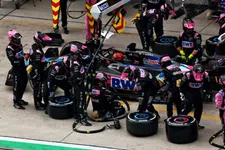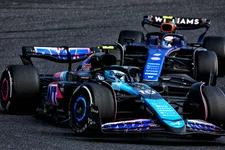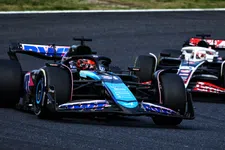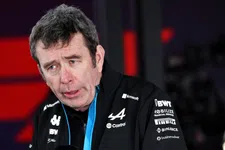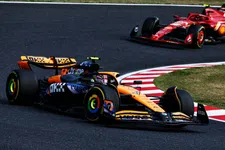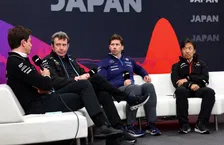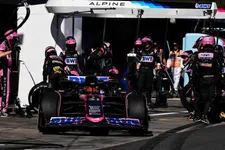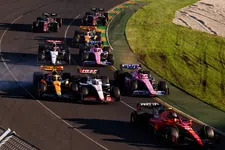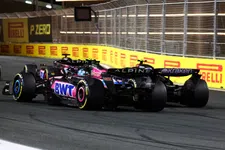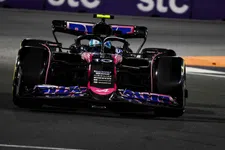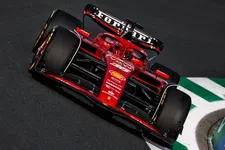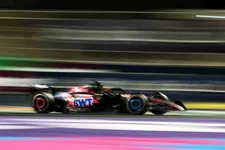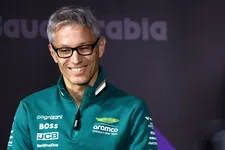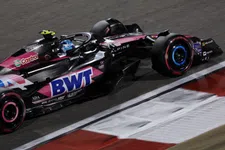The history of Alpine
For many years Renault was known for their traditional yellow car, but due to the name change the yellow colours disappeared in 2021. The 1.5 litre block of the Renault-Gordini V6 (including turbo) was the cream of the engine crop, but even then its reliability was lacking. Because of the yellow colours and the amount of smoke that regularly poured out of the car, Renault renamed the first car 'the yellow teapot'. It is an image that the racing team has still not got rid of.
By hiring Frenchman Alain Prost for the 1981 season, the tide began to turn for Renault. They started to win races and podiums, but the French team didn't finish higher than second place in the constructors' standings in 1983. It was also Prost's last year at Renault, but not without controversy.
Prost was of the opinion that Renault had not been able to get the most out of the car and constantly criticised his bosses. The cooperation reached a boiling point and Prost had to leave. In 1984, however, the Frenchman was back on the grid, only this time alongside Niki Lauda at the McLaren team.
Exit, return and exit
Where many smaller names eventually disappeared from Formula 1 because of money problems, it was Renault that couldn't keep its head above water anymore. The parent company had to save money, so having an expensive Formula 1 team was simply not possible.
One season, in 1986, Renault tried to save the day by stepping back and only supplying engines to teams on the grid. At the end of that year, that too was over and Renault disappeared from the premier class. Three years later, the French engines were back in Formula 1, but that was all. Until 2000.
In that year, the French bought the Benetton team and a year later they renamed it Benetton Renault Sport. One year later the name Benetton disappeared completely and the Renault F1 Team was back on the grid as it had been years before. The results were still not as good as in the glory years, but that changed.
The team signed Alonso in 2003 and had a fresh young driver on the team. That year, Renault finished fourth (with one win in Hungary) and a year later managed to take third place in the Constructors' standings. With Alonso driving, they took both the constructors' and drivers' titles from Ferrari and Michael Schumacher in 2005 and 2006, which also marked the end of Alonso’s first stint at the team. After two titles, Alonso called it a day and moved to McLaren.
A year later, Alonso returned, but Renault could not achieve the same results as in previous years. A constant change of drivers, as was the case in recent years, did not improve the situation either.
After it was revealed that Nelson Piquet junior had crashed on purpose at the 2009 Singapore Grand Prix (to give victory to Alonso), panic broke out within the team. The flamboyant team boss Flavio Briatore left the team, after which it was uncertain whether Renault would be allowed to stay in Formula 1 at all.
After that, they quickly went downhill. Sponsors headed for the exit and shares were sold. Eventually, only the Renault name was left on the car, but a year later this too disappeared and Renault were only present as an engine supplier.
Return to success
With the success of Red Bull Racing (and Renault's engine in the back of those cars) and financial problems at Lotus, Renault made the decision to return as a factory team in late 2016. With young Kevin Magnussen and Jolyon Palmer, the French team began the agonisingly slow road back to the top. Three years and a lot of driver changes later, Renault was back at the top of the midfield and had two experienced drivers for 2019.
Under Cyril Abiteboul's leadership, Ricciardo and Nico Hulkenberg (aka The Hulk) had to take the next step: bridging the gap with the top three teams to have a shot at the title in 2021. From a dismal ninth place in 2016, a slightly better P6 in 2017 and 'best of the rest' P4 in 2018, Renault's upward trajectory was obvious. In 2021, however, it became clear that the step up to the top was still too big.
Alpine in 2023
With the performances of Alonso and Esteban Ocon in recent years, hope is high at Alpine. Moreover, the rule changes proved to be a success for the team, who finished the 2022 season in fourth place, beating McLaren despite numerous reliability problems.
However, the team has bigger ambitions and wants to bridge the gap to the top, but for now it seems too high to make things difficult for Red Bull, Ferrari and Mercedes and compete for the world title. For Alpine, it is therefore important to continue the upward trend and get rid of the reliability problems, which have cost the team too many points. In 2023, the team will do so without Fernando Alonso, but with Ocon and Pierre Gasly.
Who will drive for Alpine in Formula 1?
The return of Fernando Alonso in 2021 was a big morale booster for the French team. The Spaniard returned to the team with which he won the world championship twice. Besides Alonso, Esteban Ocon also took a seat in the car in 2022. Next season, Pierre Gasly will take over Alonso's seat after he decided to switch to Aston Martin.
The combination of Ocon and Gasly is an exciting one, as it is well known that the two have not liked each other in the past. In their karting days, the compatriots were actually good friends, so they may be able to rekindle those ties. For Alpine, that will be a tough requirement if it does not want to see the teammates drive each other off the track.
Which engine will Renault drive use Formula 1?
All the collaborations Renault had have expired. Red Bull Racing switched to Honda in 2019 and McLaren will again use the Mercedes engine. So Renault is the only team on the 2023 grid using the French engines.



